You might be wondering who Deep Bite Man and the Edge Bite Kid are.
Many moons ago I was on a fishing trip with a couple of characters – skilled anglers – and they were discussing how they often debate where to fish when bass fishing. One of them likes to fish deep schooled fish, while the other favours the edge bite. They both had their reasons for preferring one or the other and also acknowledged their strengths in that particular technique, while still being competent in the other.
After spending a few days with these guys I walked away and thought about my own fishing, which is predominantly kayak fishing and based around the edge bite. I fished channel edges, mangrove edges, the edges of sand bars, edge-based structure and very rarely ventured into water much deeper than 2m.
I was regarded as a flathead fisho in the saltwater and caught plenty of bass in the fresh, but there were times when the bite wasn’t on the edge, due to season, weather, water temperature, rainfall, wind and a variety of other variables. I had hot bites sometimes and then occasional fishless sessions, where I was left wondering where the fish had gone. I began to realise the importance of being able to fish deep and shallow water, using a variety of techniques, so it was time to venture into deeper water.
I read loads of articles about fishing deeper water, asked questions of those who consistently caught fish in deeper water and made a point of venturing out of my comfort zone. In the process I landed snapper, bream, trevally and a variety of other species and caught fish when the edge bite wasn’t happening.
It wasn’t instant success though and I needed to work on controlling the kayak and holding position, reading the sounder, selecting lures, staying in touch with them and better understanding the structure I was fishing and the species I was targeting.
With the influx of freshwater into my local system recently, courtesy of Cyclone Debbie, my normal shallow water bite shut down and I was forced to revisit some of the deep water techniques I had developed after my first encounter with Deep Bite Man and the Edge Bite Kid.
Just like in shallow water there will be areas that hold more fish in deeper water. Keep an eye on your sounder for schooled fish and also bait balls that may attract predators. Structure is commonly a key element when fishing and in deeper water this can include changes in bottom structure such as rock, rubble, weed, snags, depressions and channels. Structure can also be artificial in the form of wrecks, bridge pylons, artificial reefs and rock walls. Structure creates current changes, eddies, shelter and also attracts bait.
River mouths, seaway entrances, deeper holes and the main river channels are also consistent producers and at times the go-to spots to be fishing. Prime examples include the winter bream spawn, where bream often school in large numbers in deeper water toward the mouths of systems and also the winter bass season when the bass often bulk up, school up and at times feed aggressively in deeper water.
If you normally catch fish on an edge or flat and the fish aren’t biting, try fishing the deeper water in close proximity to this edge.
Anchoring devices that commonly secure the kayak in shallow water, such as grab anchors (made from spring-loaded builders clamps), stake out poles, electric pole anchors and lightweight anchors, give way to heavier anchors and drift chutes in deeper water. I run a Cooper 1kg poly anchor when fishing the shallows and adding half a metre of chain to this setup is an effective option when fishing deeper water and faster currents. Downrigger bombs or similar lead weights are an option when fishing deep in lakes and impoundments without current.
Much of my deep water fishing is drifting productive areas. A drift chute (sea anchor) is effective for slowing your drift in windy conditions, while also controlling the drift angle of the kayak when used in conjunction with an anchor running rig. The anchor running rig is simply a pulley toward the nose and another toward the tail of the kayak with a loop of cord running between them and a tag line to which the anchor line or drift chute is attached.
The anchor running rig allows you to swing the anchor to the front or rear of the kayak, to fish up or down current, while also allowing you to adjust the angle the kayak sits to the drift chute, which can make fishing more comfortable in rougher conditions, or make casting, line management and staying in touch with your lure easier. I generally anchor facing up current when lure fishing, bringing the lure back naturally with the current, and facing down current when bait fishing.
A Backwater Hand Paddle is also an inexpensive and simple option for controlling the kayak angle when drifting. It is a compact paddle that can be used with one hand, allowing you to leave your larger paddle stowed when fishing.
When it comes to lures I mostly fish soft plastics due to their versatility, affordability and ease of fishing. They can also have plenty of action built into the lure. A soft plastic that catches bream on the edge bite will also catch them on the deep bite. It’s the same with other species and plastics, it’s just a matter of adding some heavier jigheads to your kit if the current and depth require it.
I have a selection of 1/12, 1/8, 1/6 and 1/4oz jigheads for fishing the edge bite and these can also be used in deeper water, however I also include a handful of 3/8 and 1/2oz jigheads in my kit in case I venture into deeper water with stronger currents, or if stronger winds restrict casting distance.
It’s also a good idea to include a few plastics with less action for deeper water, including a few jerkbait profile (straight tail) plastics. Paddle-tails and curl-tails have loads of action, which is great for fishing the shallows. However, this action slows the sink rate of the plastic, where the jerkbait can get down much quicker if you are targeting species that are holding deeper in the water column.
Another favourite for deeper water is metal blades or vibes. I run 1/12, 1/8 and 1/4oz blades when fishing the edge bite. The 1/4oz also transfers well to deeper water, along with a few 3/8 and 1/2oz for deeper water and faster currents. A lot of anglers get excited about the vibration a blade will put through the rod tip and they tend to fish them too aggressively. I have had success fishing them more subtly, in the same way I fish a plastic, with small hops and pauses or slow lifts and drops.
Other deep water lure options include micro-jigs, metal slugs and deep diving hardbodies. Hardbodies will generally have a diving depth marked on the packaging, giving you a starting point. If you have a sounder on the kayak you can troll the lure at different speeds until it hits the bottom, giving you an idea of what depth the lure runs at behind the kayak. This can be handy when targeting deep structure, bait and schooled fish.
There are four main techniques I use when fishing deeper water.
Taking the light plastics you are fishing in the shallows and allowing them to slowly glide and swim toward the bottom in 3, 4, 5, and even more metres of water can be extremely effective. You need to be patient and position your kayak so that you can stay in touch with the plastic on a slack line, while feeling or watching your line for any bites.
This can be especially effective in the low light conditions of dawn and dusk, when fish are feeding higher in the water column, and also on those glassy days and slack tides, when the bite can be finicky. The fish have plenty of time to watch that plastic descend toward them, move in and eat it. This technique can be dynamite on bream, snapper and a variety of other species. Kayak control is crucial when fishing light and a drift chute or hand paddle can help avoid the frustration of a spinning kayak.
This is the opposite of the first technique and involves fishing heavy, so that the lure is bumping and ploughing into the bottom. This technique can be effective when targeting bottom dwelling species or species that are holding tight to the bottom. It is also a great technique for beginners. Get it down there and in their faces. Many big bass have been caught slow rolling a plastic through schooled fish on a 1/2oz jighead. The heavier lure can also help keep the kayak in position, by simply keeping the rod tip toward the nose of the kayak when retrieving the lure.
Fishing vertical is extremely effective and it’s about striking a balance to find a jighead that will hold directly below the kayak as you drift with the current. When I first started working lures vertically I was hopping, twitching, lifting and moving the lure all over the place… with little success.
Nick Whyte from Tech Fishing taught me that less is more and that by using minimal movement and keeping in touch with the bottom occasionally, almost driving the lure just above the bottom, your lure presents a lot more naturally. Success followed with this much more natural approach… after all baitfish don’t spend their time rocketing around all over the place.
The last technique is basically the same technique that I use when fishing the shallows, with a little more jighead weight to handle the depth. I make long casts ahead of the drift, either directly in front of the drift or slightly across the drift to cover more ground. Then I allow the lure to sink on a slack line, while managing the slack to keep an eye on the line and feel for any takes.
Once the lure touches down on the bottom I give it a double hop, allow it to settle on the bottom again and repeat. It’s a matter of selecting a jighead that’s heavy enough to reach the bottom, while light enough to create that natural drift and sink that attracts the bite. Once the lure is below the kayak, give it a couple hops and retrieve it. Fishing behind the drifting kayak (dragging it with the drift) makes it difficult to work the plastic naturally and keep any contact with the bottom.
As much of my fishing has been in the shallows, that is what I have mainly written about, so I figured I would cover some deep water techniques in more detail in this article and I hope this encourages those other edge bite kids out there to give some deeper water fishing a crack, especially when the edge bite is shut down. So who are you, Deep Bite Man or Edge Bite Kid? Is there a species, technique or water depth that you would like to explore more? Fish on!
Reads: 2429
Snapper become more common as you start fishing deeper.
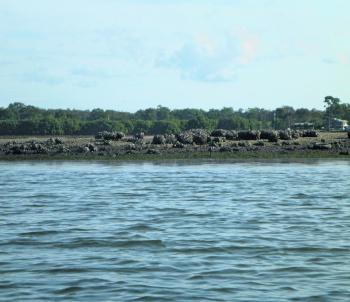
This is another great example of an edge bite structure.
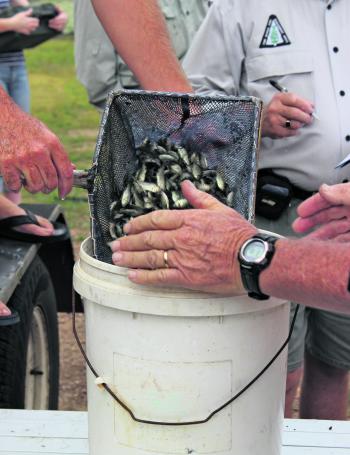
Who will catch these bass when they’re bigger, Deep Bite Man or the Edge Bite Kid?
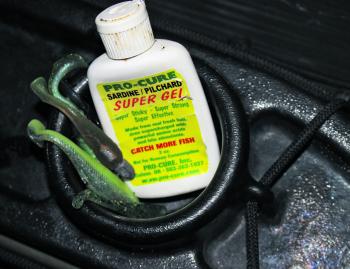
Scent can make a difference when fishing slow and deep.
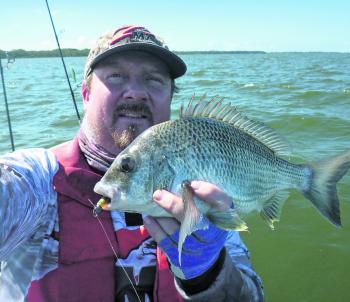
With freshwater floating on top, it’s time to fish deeper.

An anchor can allow you to hold position and fish more effectively.

An anchor running rig makes control and positioning easier.

A hand paddle allows you to adjust your drift angle with one hand.
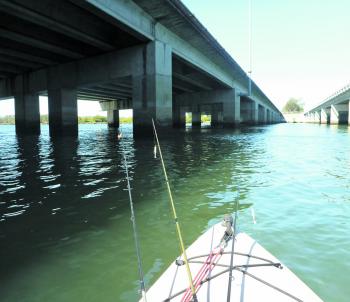
Bridge pylons are prime deep water structure.
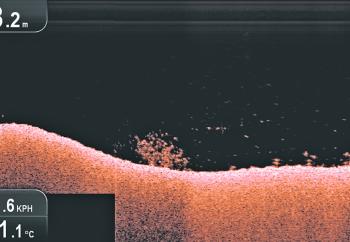
There they are, a bit deeper.
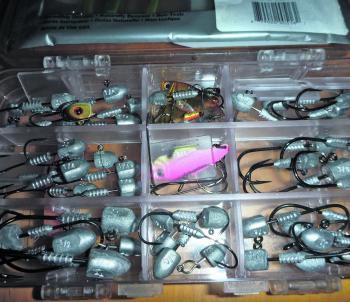
This selection should cover you for edge and deeper bites.

This ramp is a good example of structure where you’ll find an edge bite.




